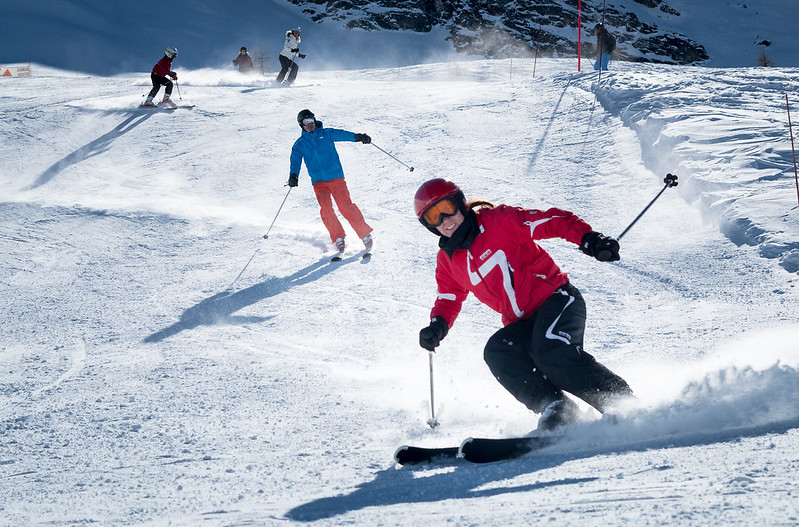By Alana Harris
Ski holidays may be good fun but with their high cost and significant environmental impact, what does the future hold?
With youth ski culture being centred around adventurous and audacious après skiing, it can seem like the slopes have become the new ocean beach, but in reality, is ski and snowboard culture snowploughing to a halt?
When you’re sat at home over the winter period, aimlessly scrolling through social media and you come across posts of snow-covered mountains, lively on-piste bars and ski lift selfies, it can easily feel as though everyone apart from you is out enjoying a mountain holiday. However, the number of annual skiers and snowboarders is actually in decline, and it seems to be younger age groups who’re passing on snow sports.
Ski Weekends conducted a survey which found that two thirds of people who ski are aged between 43 and 65 and in another study completed by Ski Club, 16-24 year olds made up only 5% of the demographic of those who participate in snow sport holidays. This begs the question, why are millennials reluctant to hit the slopes?
Without a doubt it’s easy to point to cost as perhaps one of the biggest factors deterring young people from snow sports. Younger generations have a lot to think about when it comes to finance, we have monumental student loans building up as the years go by, rent and housing seems to constantly be on the rise, less and less jobs are becoming available and pints aren’t getting any cheaper either.
It’s no secret that ski holidays don’t come cheap, having to fork out for a lift pass, accommodation, flights and all of the clothing and equipment unsurprisingly racks up a hefty bill, which many are unwilling to pay. If you’ve already got rent, bills, transport and food costs to think about it’s no shock that young people are shunning the slopes and leaning towards more affordable summer holiday trips instead.
Another element putting young people off could be the environmental impact skiing can have. With generations becoming more eco-conscious than ever, skiers are being criticised for destroying the very environment they love. Ski resorts can lead to disturbance of wildlife, deforestation and high water usage, as well as being an extremely energy intensive operation which relies on fossil fuels and a huge amount of electricity. Operating a single ski lift for a month requires around the same energy required to power 3.8 households for a year. As well as this, maintaining the slopes means groomers are used nightly which run on diesel, producing carbon dioxide, nitrogen oxides, and particulate emissions. It’s no surprise that an age guided by the words of Greta Thunberg aren’t impressed by such issues.
Ski resorts are however trying to do their part in becoming greener. Renewable energy resources are being invested in through the use of solar panels, wind turbines and small hydro turbines. Better forest management is in force in order to work towards greater protection of wildlife and improve the natural habitat, and greater waste management and composting programmes are being explored.
So apart from going greener, what else are ski resorts doing to lure millennials to the resorts? Mainly they’re using music. It’s no secret that piste bars go out of their way to cater for younger tourists with DJs, live bands and lots of alcohol. We’ve all either seen or been the one dancing precariously on the top of a slippery wooden table, pint in hand. But now resorts are going a step further with an increase of snow festivals, there are now numerous big-budget Snowsports music festivals like Snowboxx, Tomorrowland Winter and Snowboming, all helping to attract younger tourists with big names like Stormzy, The Prodigy, Annie Mac, Andy C and countless others.
You can definitely see where ski resorts are going with the snow festival initiative, music festivals are an incredibly popular commodity for younger audiences and millions flock to them over the summer so it seems plausible to combine them with the mountains to get more young people interested in snow sports. But you have to question the fact that the approach doesn’t really eradicate the issues of both cost and environmental impact. Only time will tell whether future generations will continue to say no to skiing or whether they’ll find a way to embrace it.
Image credit: Barney Moss

